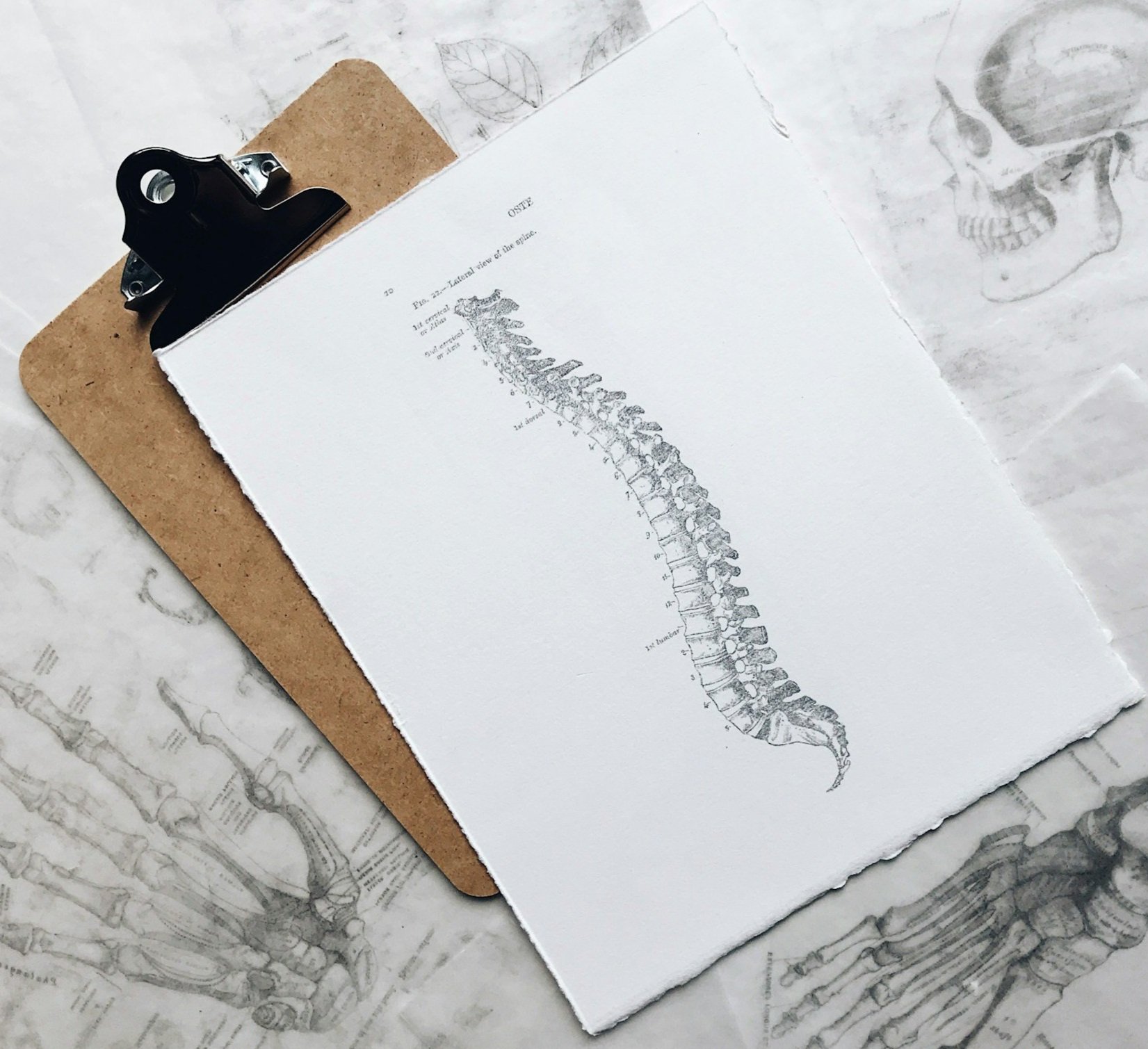Understanding Ankylosing Spondylitis: A Progressive Condition That Challenges Traditional Treatment Approaches
Ankylosing spondylitis (AS) is a chronic, inflammatory, autoimmune disease that primarily affects the spine, causing pain, stiffness, and, over time, a progressive loss of mobility. It is a form of inflammatory arthritis that can often be misunderstood or misdiagnosed in the early stages, particularly in individuals seeking physical therapy or chiropractic care for back pain and stiffness. While physical therapy can play an essential role in managing the symptoms, it’s important to recognize that ankylosing spondylitis is a degenerative condition that requires a comprehensive, multidisciplinary approach to treatment. In this blog, we’ll explore what ankylosing spondylitis is, its pathophysiology, common symptoms, diagnostic process, and why it often results in “failure” of traditional therapy approaches.
What is Ankylosing Spondylitis?
Ankylosing spondylitis is a type of autoimmune disease that primarily targets the spine and the sacroiliac joints (where the spine meets the pelvis), leading to inflammation and pain. Over time, the inflammation can cause the vertebrae to fuse together, resulting in a rigid spine and limited movement. This fusion is a hallmark of AS and can be seen in advanced stages. AS can also affect other joints, organs, and tissues, causing a wide range of symptoms beyond the spine.
Ankylosing spondylitis is part of a group of diseases known as spondyloarthritis, which are characterized by inflammation of the spine and sacroiliac joints, as well as a genetic association with the HLA-B27 gene.
Pathophysiology of Ankylosing Spondylitis
The pathophysiology of ankylosing spondylitis involves an autoimmune response that leads to chronic inflammation. The exact cause is not fully understood, but it is believed to be a combination of genetic predisposition and environmental factors (such as infections) that trigger the inflammatory response.
Here’s a breakdown of what happens at the cellular level in AS:
Inflammation in the Joints: The immune system mistakenly attacks the joints, especially in the spine and sacroiliac joints. This leads to inflammation, pain, and swelling. In the early stages of AS, the inflammation primarily affects the soft tissue structures, such as the ligaments and tendons, near the joints.
Bone Erosion: Chronic inflammation can lead to the erosion of the bone at the sites of inflammation, such as the spine. The body attempts to heal this damage by forming new bone tissue, which can result in abnormal bone growth.
Spinal Fusion: Over time, the formation of new bone at the affected sites can lead to the fusion of vertebrae. This is known as "ankylosis" and causes the spine to become rigid. The fusion limits mobility and flexibility, and in advanced stages, it can cause a “hunched” posture.
Extra-Articular Manifestations: In addition to spinal involvement, AS can affect other areas of the body, including the eyes (causing uveitis), the heart (leading to heart problems), and the lungs (leading to fibrosis).
Symptoms of Ankylosing Spondylitis
The symptoms of ankylosing spondylitis can vary greatly in severity, but the hallmark symptoms include:
Chronic Lower Back Pain: One of the first and most common signs of AS is lower back pain, which is typically worse in the morning or after long periods of inactivity (like sleeping or sitting). The pain is often associated with stiffness and improves with movement or exercise.
Morning Stiffness: Individuals with AS often experience stiffness in the spine, especially in the lower back, after waking up. The stiffness can last for more than 30 minutes and gradually improves with activity.
Progressive Loss of Mobility: As the disease progresses, pain and stiffness can worsen, leading to a reduced range of motion in the spine and hips. This can make it difficult to bend, twist, or perform everyday activities.
Pain in the Sacroiliac Joints: Inflammation of the sacroiliac joints, where the spine connects to the pelvis, can cause pain and tenderness in the lower back and buttocks. This pain may radiate down into the thighs.
Postural Changes: Over time, the spinal fusion that occurs with AS can lead to a stooped or forward-flexed posture. This is often referred to as the “bamboo spine,” where the spine appears stiff and curved.
Peripheral Joint Pain: AS can also affect other joints outside of the spine, particularly the hips, knees, shoulders, and ankles. This can cause pain, swelling, and decreased range of motion in these joints.
Fatigue: Chronic inflammation associated with AS can lead to fatigue, which may interfere with daily functioning.
Diagnosis of Ankylosing Spondylitis
The diagnosis of ankylosing spondylitis is often challenging, especially in the early stages when the symptoms may mimic other musculoskeletal conditions.
The diagnostic process typically involves a combination of:
Medical History: A thorough medical history is essential to understanding the onset of symptoms and any family history of AS or other spondyloarthropathies.
Physical Examination: A physical exam will focus on the assessment of spinal mobility, posture, and the presence of tenderness in the sacroiliac joints. The “Schober’s test” is commonly used to assess spinal flexibility, and limited motion in this test may indicate AS.
Imaging: Imaging techniques, such as X-rays, MRI, or CT scans, are used to assess changes in the bones and joints. Early signs of AS, such as sacroiliitis (inflammation of the sacroiliac joints), can be detected on MRI before significant changes are visible on X-ray. In advanced cases, X-rays can reveal bony fusion of the spine.
Genetic Testing: Testing for the HLA-B27 gene is a key factor in diagnosing ankylosing spondylitis, as this gene is present in 90-95% of individuals with AS, though not everyone with the gene will develop the disease.
Blood Tests: Inflammation markers, such as the erythrocyte sedimentation rate (ESR) and C-reactive protein (CRP), can be elevated in individuals with AS. However, these markers are not specific to AS and are only used to monitor disease activity.
Why Traditional PT or Chiropractic Care May "Fail" in Ankylosing Spondylitis
While physical therapy (PT) and chiropractic care are valuable in managing many musculoskeletal conditions, they may not be sufficient for individuals with ankylosing spondylitis, particularly if the underlying disease is not recognized. Here's why:
Progressive Nature of the Disease: AS is a progressive, degenerative condition that cannot be “cured” with PT or chiropractic alone. The disease involves chronic inflammation and structural changes to the bones and joints, leading to fusion and irreversible damage. Traditional treatments like PT may help improve mobility, but they may not stop or reverse the disease’s progression.
Limitations of Manual Therapies: Chiropractic care, which often relies on spinal manipulation, may not be suitable for individuals with AS due to the rigidity and potential fragility of the spine in later stages of the disease. While manual therapies can help relieve symptoms, they are not a cure and could potentially aggravate the condition in the long term if not appropriately managed.
Focus on Symptom Management: PT and chiropractic care are often focused on improving function and reducing pain, but without addressing the underlying inflammatory process, the results may be temporary. Medications, such as disease-modifying anti-rheumatic drugs (DMARDs) or biologics, are often necessary to manage the disease process itself.
Treatment Options for Ankylosing Spondylitis
Medications: The cornerstone of AS treatment includes medications to reduce inflammation and slow disease progression. Nonsteroidal anti-inflammatory drugs (NSAIDs) are typically used to manage pain and stiffness. In more severe cases, TNF inhibitors (biologic drugs) or interleukin-17 inhibitors may be prescribed to target the inflammatory process directly.
Physical Therapy: While physical therapy cannot cure AS, it can help improve mobility, reduce pain, and maintain functional independence. PT can focus on stretching, strengthening, and postural exercises to slow the loss of mobility and prevent deformity. Dry needling is an intervention that can greatly reduce pain associated with AS and can help keep individuals active. Learn more about dry needling here.
Exercise: Regular exercise, particularly low-impact activities like swimming, cycling, and yoga, can help improve flexibility, strengthen the muscles around the spine, and maintain joint health.
Surgical Intervention: In rare cases, surgery may be required if there is significant joint damage or deformity, such as joint replacements or spinal surgery for severe deformities.
Conclusion
Ankylosing spondylitis is a chronic, progressive autoimmune disease that primarily affects the spine and sacroiliac joints, causing pain, stiffness, and eventual fusion of the spine. While traditional physical therapy and chiropractic care can help manage symptoms, they may not fully address the progressive and degenerative nature of the disease. Early diagnosis and a comprehensive treatment plan, including medications to manage inflammation, physical therapy to maintain function, and regular monitoring, are key to improving quality of life and preventing long-term disability.
If you suspect you may have ankylosing spondylitis or are struggling with unresolved lower back pain, consider consulting with a healthcare professional who specializes in inflammatory conditions to get a proper diagnosis and treatment plan. Reach out to us here!
If you are struggling with illness or injury and would like to get your body moving, schedule a physical therapy appointment with us today! At Wildflower Physical Therapy & Wellness, we can help you to get back to the life you want to live through pain management strategies, activity promotion and exercise. Our Cash Based Physical Therapy model allows us to deliver a highly individualized treatment plan without the fuss of insurance companies. Interested in trying dry needling to support your exercise routine and maximize recovery? Reach out to us today!


